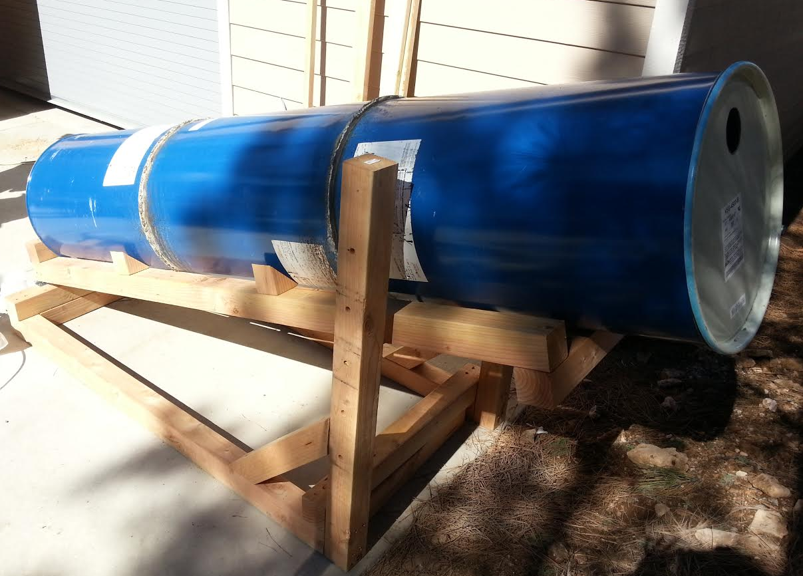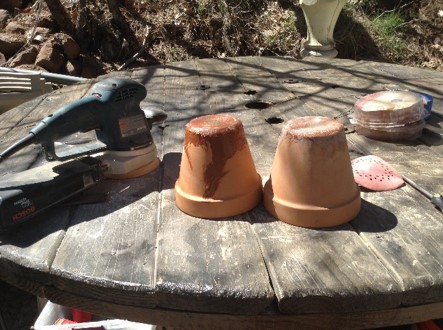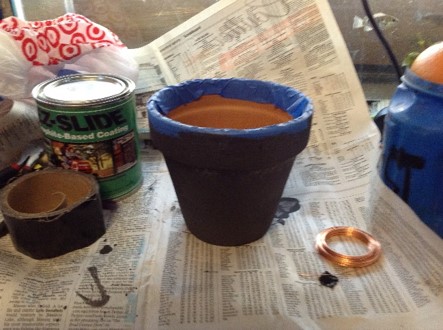Prototypes
The team created two prototypes for waste management. A bio-digester was built using three 55 gallon drums and the bio-battery was created using a terracotta pot.
Bio-Digester
The bio-reactor consists of three component: reactor, stand, and swing arm. The reactor vessel used was constructed using three 55 gallon stainless steel drums. The biogas production if temperatures are kept optimal would result in 75 cubic feet per day which has the ability to light a 100w light bulb for 6 hours.

Here is a picture of Doug welding the drums together.

The completed digester. The angle of elevation can be adjusted depending on how much surface area you wanted for the microbes.
Bio-Battery
The Bio-Battery is a small modular design created using a terracotta pot. Inside of the pot is anode of the battery and a mixture of cow manure and water. The anode of the battery is made out of a zinc bolt clamping a peace of carbon felt. On the exterior of the pot is a coating of carbon graphite paint that acts as the cathode. Using wires from the inside anode to the cathode a potential of .8V to 1.2V was achieved for each pot. A system of pots in series and parallel would be able to charge a cellphone in a rural village.

The bottom of the pots were sealed using fiberglass so that no liquid leaked out of the bottom.

The pots were then painted with three coats of carbon graphite paint. This will act as the cathode for the battery.